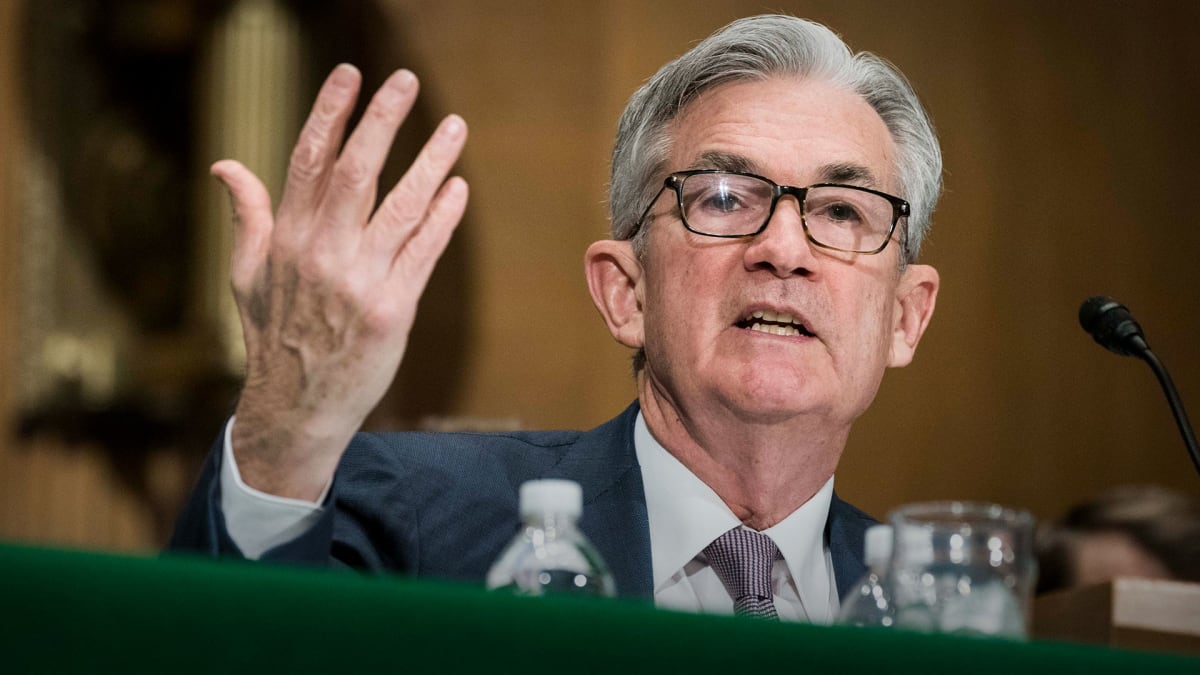
The Federal Reserve faces perhaps its most difficult policy decision since the global financial crisis Wednesday as Chairman Jerome Powell grapples with stubborn inflation dynamics and a simmering bank crisis in the world's biggest economy.
Yet the most important information to emerge from the Fed's two-day policy meeting in Washington later this afternoon is likely to come from its quarterly 'Summary of Economic Projections', better-known as the dot plots, and not its headline interest rate decision.
That's not to say the Fed's options aren't challenging: markets likely to surge sharply higher if Powell decides to pause the Fed's rate hike effort in order ease pressures on the banking system, a move that would loosen financial conditions and complicate his inflation fight.
On the other hand, another rate hike -- on top of the 450 basis points in tightening the market has absorbed over the past year -- could heap further pressure on bank balance sheets and send a sanguine signal to markets with respect to the financial stability risks linked to the collapse of SVB Financial and its wholly-owned lender, Silicon Valley Bank, on March 10, and the closure of Signature Bank by New York regulators two days later.
And, much like a referee at sporting event, either decision is likely to be met with significant criticism.
"We think the Fed has done enough to return inflation to the target, and we can’t be sure that the threats to the banking system are over," said Ian Shepherdson of Pantheon Macroeconomics. "Neither can we be sure of the severity of the real-world implications of last week’s events, even with no further failures, though we are sure that the banking crisis is a deflationary event."
"But none of this likely will stop the Fed from hiking today, " he added. "To pivot now to doing nothing, given that markets are much calmer than seemed likely just a few days ago, seems like a big stretch. However, carrying on with rate hikes as if nothing has happened except a brief disturbance in the banking system strikes us as risky."
The CME Group's FedWatch has locked-in an 89.3% chance of a 25 basis point rate hike, and even puts the chances of a follow-on hike in May at 63%, suggesting traders feel the Fed will maintain its inflation focus through the banking crisis.
That, to some degree, adds even more emphasis to the Fed's quarterly dot plot release, which is likely to indicate further inflation concerns from the 19 different officials that contribute projections.
December's dots pointed to a terminal Fed Funds rate of 5.125%, but a host of policy makers, and indeed Chairman Powell himself, were at pains to insist that 'sticky' inflation pressures had rendered that consensus unreliable over the first two months of the year.
Just two days prior to the SVB collapse, in fact, Powell told lawmakers on Capitol Hill that rate hikes could be faster, higher and last for longer than markets anticipate, noting that future decisions will be based on the 'totality' of incoming data.
That lifted market bets on a 50 basis point rate hike in March to nearly 70%, compared to just 9.2% in February, with the odds of a Fed Funds rate that tops 5.5% in July rising past 75% for the first time this year.
All that changed, of course, as the banking crisis escalated at home, and spread into Europe, over the following weeks.
"Th Fed’s messaging on inflation will be pushed to the side as investors watch for two things: first, simply whether the Fed hikes 25 basis points or stands pat, but second and more importantly, how it positions its level of concern around recent events and the risk of a funding crisis in the banking system and therefore how it guides for the path of rates and QT from here," Saxo Bank strategists wrote Wednesday.
But the underlying pressures linked to the Fed's inflation concerns haven't gone away: the February jobs report showed a stronger-than-expected gain of 311,000, with only modest declines in average hourly wages, while the Fed's preferred inflation gauge, the core PCE Price Index, rose 0.5% on the month, and 5.5% on the year, topping Street forecasts.
"Market expectations have swung wildly since the last dot plot with stickier inflation numbers leading to talk of 6% terminal rates in February and early March while the more recent banking sector woes have led to a rapid repricing of those expectations lower," said Brendan Murphy, head of core fixed income, north America at Insight Investment.
"It will be interesting to observe whether policy maker’s expectations are as volatile as the market has been or if the Fed is willing to look through the recent volatility and reiterate its commitment to keep policy rates restrictive until inflation is well under control," he added.
European Central Bank President Christine Lagarde faced a similar dilemma last week, in fact, as Credit Suisse spiraled into the arms of its cross-town rival, UBS Group, at the behest of Swiss regulators and European banks stocks wobbled over the threat of possible contagion.
Still, the ECB lifted its three benchmark interest rates by 50 basis points last week, with Lagarde noting the fine balance between elevated inflation risks and "current market tensions", both of which, she said, "reinforce the importance of a data-dependent approach to the Governing Council’s policy rate decisions, which will be determined by its assessment of the inflation outlook."
That balance was evident in a speech she made earlier today at Goethe University in Frankfurt, a short walk from the ECB's headquarters on the Main River, where she attempted to establish the central bank's current position following the rescue of Credit Suisse and the still-simmering crisis in the U.S.
"With high uncertainty, it is even more important that the rate path is data-dependent," Lagarde said. "This means, ex ante, that we are neither committed to raise further nor are we finished with hiking rates."
Powell isn't likely to leave that sort of ambiguity hanging over markets when he finishes speaking to the media later today.







